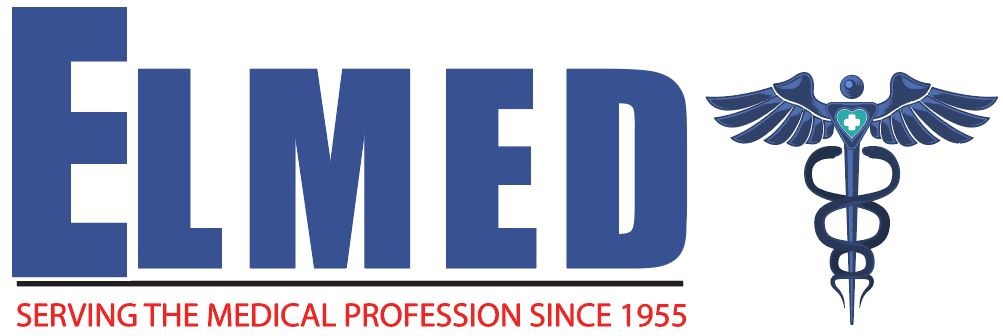New Study Finds Amyloid Protein Transmission Through Contaminated Instruments
A recent study by the University College of London Institute of Neurology found that Amyloid beta pathology – protein deposits in the brain – might have been transmitted to young, healthy patients several decades earlier by contaminated surgical instruments.1 This is the latest finding to be added to the every-growing list of patient harm and/or death caused by instruments whose cleaning IFUs have not been validated to remove debris and biofilm during reprocessing.
Surgical instrument reprocessing personnel have always been told that “If it’s not clean, it can’t be sterile” The more accurate statement is that “If it’s not clean, it can’t be safe!” As this recent study demonstrates, just because you sterilize an instrument does not mean that it is safe to use, especially if it is contaminated with harmful, microscopic bioburden prior to sterilization.
Published in the February 2018 issue of Acta Neuropathologica, this study describes how researchers studied the medical records of people who had brain bleeds caused by amyloid beta build-up in the blood vessels of the brain. The researchers found that all of the people studied had undergone neurosurgery two or three decades earlier as children or teenagers. These findings demonstrate that amyloid beta deposition can be transmitted through contaminated instruments much the same way that prion proteins are transmitted which cause Creutzfeldt-Jakob Disease (CJD).
In this new study, the patients’ young age and lack of family history for early-onset Alzheimer’s means it is unlikely that these amyloid beta deposits were formed naturally. It follows similar findings in 1999 that contaminated surgical instruments were behind dozens of British patients being infected with CJD, the human strain of so-called “mad cow disease”.
In an earlier Elmed blog entitled “Creutzfeldt-Jakob Disease (CJD) and the Challenges of Surgical Instrument Reprocessing” (September 4, 2020) it was stated that CJD “is caused by rogue, misfolded protein aggregates termed prions, which are infectious and cause fatal damages in the patient’s brain. The Centers for Disease Control and Prevention (CDC) defines prions as “abnormal, pathogenic agents that are transmissible and are able to induce abnormal folding of specific normal cellular proteins called prion proteins that are found most abundantly in the brain.”
It has long been known that CJD is transmitted via contaminated surgical instruments that had been used on prion-infected brain tissue. These new findings raise a host of new issues and additional concerns surrounding the need for validated cleaning IFUs for surgical instruments. This is because the people studied had undergone neurosurgery two or three decades earlier as children or teenagers and because Amyloid beta is best known for being one of the hallmark proteins of Alzheimer’s disease.
“It is well known that the abnormal proteins seen in Creutzfeldt-Jakob disease have been transmitted between patients by certain medical and surgical procedures. We have been investigating whether the same can be true for amyloid beta,” says the study’s lead author, Professor Sebastian Brandner of the University College of London Institute of Neurology.
The researchers looked in the pathology archive at the National Hospital for Neurology and Neurosurgery for biopsy and autopsy materials of young adult patients with confirmed amyloid beta pathology, which can lead to brain bleeds or harmful plaques, in the brain’s blood vessels. These deposits of the amyloid protein occur increasingly frequently in older individuals but only very rarely in younger people.
Previous work in laboratory animals has shown that tiny amounts of abnormal amyloid beta protein can stick to steel wires and transmit the pathology into the animals’ brains. This study is the first to suggest a similar type of pathology transmission is possible in humans through the use of contaminated surgical instruments.
“Our findings relate to neurosurgical procedures done a long time ago. Nevertheless, the possibility of pathological protein transmission, while rare, should factor into reviews of sterilization and safety practices for surgical procedures,” he adds.
“Neurosurgery is becoming increasingly common in older individuals. As amyloid beta pathology increases in brains with age, this raises the potential for onward transmission of protein pathology to other individuals in the same hospital,” says the study’s first author, Dr. Zane Jaunmuktane, of the University College of London Institute of Neurology.
What steps can and should a healthcare facility take to reduce their patients’ risk of contracting a serious disease or a dangerous surgical infection from a contaminated instrument? The first step begins with the healthcare facility’s purchasing process for reusable surgical instruments.
When considering the acquisition of new surgical instruments, the AAMI “Checklist” states that: “Preventing reusable medical device–related HAIs begins with the active and committed participation in the purchasing process to identify the resources that each stakeholder must have in order to prevent contamination.”2
Given this recently discovered threat to patient safety from contaminated surgical instruments in the University College of London Institute of Neurology study, the need for healthcare facilities to demand validated IFUs from their surgical instrument manufacturers has never been greater. Asking for validated IFUs is a key step that healthcare facilities must take to reduce the risk of a contaminated instrument infecting one of their patients with a potentially life-altering and/or life-threatening pathogen.
1 “Evidence of amyloid-β cerebral amyloid angiopathy transmission through neurosurgery” Acta Neuropathologica volume 135, pages 671–679 (February 15, 2018)
2 AAMI publication “Checklists for Preventing Healthcare-Associated Infections”





